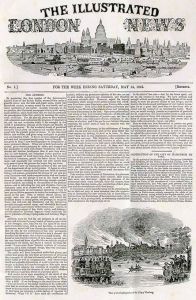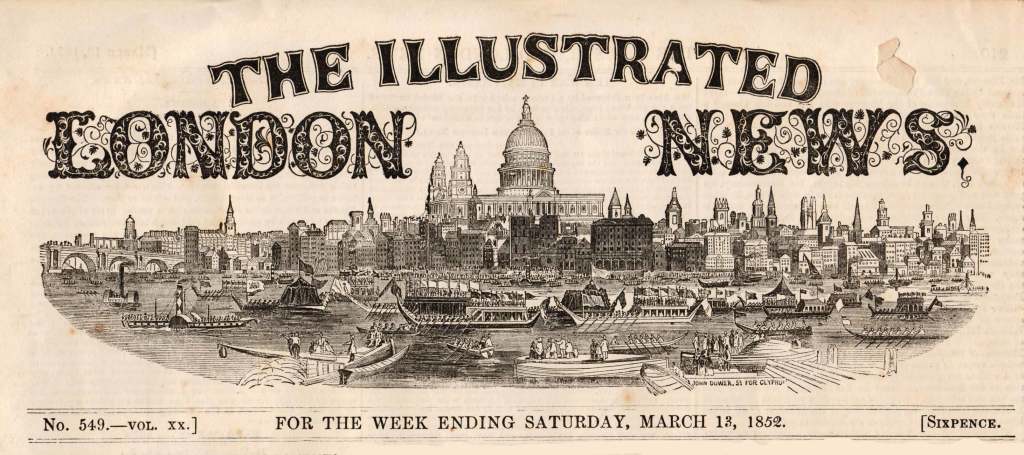Updated 12.04.14 @ 6:55am
by Megan Birden, Intern, Curry College, Carmi Cheskis- Gold, Intern, Brandeis University, Robin Tagliaferri, FHM Executive Director and Juilan Weiss, Intern, Curry College
In February 1847, the New England Relief Committee, a group of Boston business and community leaders, assembled in Faneuil Hall to organize a humanitarian voyage to Ireland at the height of the Great Famine. Donations of food and cash were receive from individuals, church and community groups from across New England. In April 1847, eight hundred tons of food and other provisions were brought to Cork, Ireland aboard the USS Jamestown.
In March and April 1847, Captain Robert Bennet Forbes (1804-1889), a member of the New England Relief Committee, donated his time and expertise to the effort by hiring a crew, loading goods, and commandeering the voyage from the Charlestown Navy Yard in Boston to Cork. Forbes also procured a food and provisions distribution plan before departing from Boston.
In addition to Captain Forbes and his brother, John Murray Forbes (1813- 1998), members of the New England Relief Committee included Boston Mayor, Josiah Quincy, Jr. (1802-1882), Andrew Carney 1794-1864), founder of Carney Hospital, Dorchester, Edward Everett (1794- 1865), Massachusetts Governor and President of Harvard University, Major North Ludlow Beamish (1797- 1872), Irish military writer, and Reverend Theobald Mathew (1790- 1856), Catholic priest and social reformer in Ireland. In total, the committee had 21 members with 8 business sponsors.
Most Reverend John Bernard Fitzpatrick (1812- 1866), Bishop of Boston from 1846- 66, formed the Relief Association for Ireland which collected funds from both Protestant and Catholic churches from across the region.
In 1967, Dr. H.A. Crosby Forbes (1925-2012) great grandson of Captain Forbes, created an exhibition at Forbes House Museum chronicling the historic humanitarian voyage. Along with newspaper announcements from Boston, the exhibit, Massachusetts Help to Ireland During the Great Famine, included press accounts and illustrations from the Illustrated London News.
Over the next three years, Forbes House Museum hopes to collaborate with Irish scholars and community leaders in Massachusetts, Connecticut and Ireland to revisit and expand upon Crosby Forbes’ 1967 exhibit.
The Illustrated London News_ was the world’s first weekly news magazine whose first issue was published in May 1842. At the height of the Famine, Cork native, James Mahony, began working for the magazine as an illustrator, documenting the plight of the Famine in County Cork through a series shocking illustrations and accompanying text.
In the coming weeks, a selection of Mahony’s Famine illustrations will be featured on 02186/MyTownMatters.
The Illustrated London News’ First Issue
The first edition of The Illustrated London News appeared on Saturday, 14 May 1842, timed to report on the young Queen Victoria’s first masquerade ball. Its 16 pages and 32 wood engravings covered topics such as the war in Afghanistan, a train crash in France, a survey of the candidates for the US presidential election, extensive crime reports, theatre and book reviews, and a list of births, marriages and deaths. Two hundred men were hired to carry placards through the streets of London promoting the first edition of his new newspaper. Costing sixpence, the first issue sold 26,000 copies. (please click on image for a larger view.)
~ ~ ~ ~ ~ ~ ~ ~ ~
The Forbes House Museum has been collaborating since 2011 with scholars and community groups from the United States and Ireland, researching Ireland’s Great Famine, which took place from1845 to 1852.

